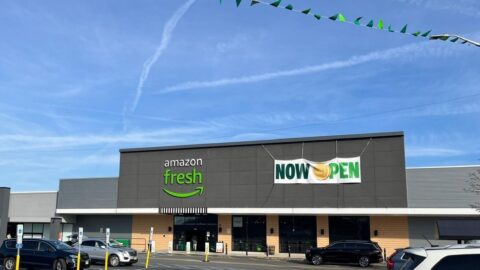After years of supply chain disruption and economic uncertainty, a new study from Amazon Business has uncovered a refreshing sense of optimism among procurement professionals heading into 2024.
While supply chain woes generated by COVID, wars and drought are still a concern, those same challenges have helped to raise the profile of the procurement practice within companies, the 2024 State of Procurement Data Report found. The result is new levels of investment in procurement functions in 2024 and a prioritization of efforts to optimize and modernize B2B buying practices and platforms.
“Two years ago, you never heard of a CEO on an earnings call talking about sourcing or supply chain,” shared the Head of Procurement at a multinational telecom company in the report. “Now, it’s a big part of every earnings call. All of a sudden [procurement’s role] is geopolitical, it’s economic.”
For its third annual procurement study, Amazon expanded the scope to include insights from more than 3,100 B2B buyers across six countries in addition to the U.S. (the UK, Germany, France, Italy, Spain and Japan) as well as a range of industries, including government, hospitality, healthcare, manufacturing and retail. The results showed a clear global trend toward procurement prioritization.
“We’ve had a very challenging few years, but across the world there is a level of optimism around the role of procurement in achieving business results,” said Aster Angagaw, VP and Head of Public, Commercial and Strategic Sector at Amazon Business in an interview with Retail TouchPoints. “The procurement organization is becoming more strategic. They are responsible for huge budgets in organizations, so smart business buying is really important for companies that want their dollars to go farther.”
One of the strongest indicators of that optimism is the fact that 53% of respondents said they expect their procurement budget to be higher in 2024. And a whopping 98% said they plan to spend some of that extra cash optimizing and/or modernizing their procurement systems and processes.
Among the top areas of focus for procurement professionals in 2024 will be:
- Using AI to modernize systems and processes and sharpen analytical capabilities;
- Gaining greater transparency and instituting “guardrails” to manage the ongoing democratization of the procurement function; and
- Finding tools and resources that enable procurement executives to better execute on ESG goals.
Modernizing and Optimizing B2B Buying

Following a year in which many procurement leaders were focused on reducing costs, executives now plan to use those savings, as well as increased budgets in many cases, to optimize their processes in order to operate more strategically. In fact, 95% of respondents said there was currently room for optimization in their processes, and 98% said they were planning investments specifically in the areas of analytics and insights tools, automation and artificial intelligence over the next few years.
“In the current economic climate, the need for flexible and agile procurement is not limited to the U.S.,” said Angagaw. “There is global alignment about the need for data analytics, sustainable supply chain practices and optimization.
“There is a lot of excitement around AI in procurement, because there is a need for deeper analytics,” Angagaw added. “About 44% of respondents said they are looking for better and deeper data analytics and 98% of the decision makers are planning investment in analytical tools.”
The Democratization of B2B Buying
Another major impact of the pandemic has been the democratization of the procurement function within organizations, said Angagaw.

“It used to be that the procurement professional was doing all the buying, or people bought what they needed ad hoc, but when the pandemic and work from home started, a lot of different individual users started purchasing for the organization,” she said. “Because of this, the need for visibility and control became really critical for companies — guided buying, budget management, those kinds of tools became really important for the organization to say: ‘I want this person to buy XYZ. I want them to stay within this budget.’ I think companies realize now that they don’t need 10 people in a room purchasing everything, they can allow people to buy what they need based on specific guidelines and rules.
“Allowing more people from the organization to do the buying is also about speed and agility,” Angagaw added. “It used to take months of RFPs, and then there’s a long-term contract that locks you in. There isn’t a lot of flexibility in that structure, and as the volatility of the economy is increasing, people don’t want to do that anymore.”
In particular, the study found that procurement teams are looking to reduce the time they spend on low-value purchases to free up their resources for more strategic work, despite staffing shortages. But currently, 91% of respondents said their organization’s purchasing processes are centralized in a way that only allows specific staff in procurement to make purchases.
Opening those processes up to more people across the organization will be a key area of investment in 2024, but along with more agility can come additional complications, so companies also are expecting to invest in tools that not only make purchasing more transparent but also incorporate guardrails to keep all that buying in check.
Enabling Action on ESG
As consumers have become more socially and environmentally conscious (and demanding), companies have responded with mandates across their businesses. A key sticking point in meeting these mandates can be the dispersed and complex nature of a companies’ supply chains, and that challenge is reflected in the study: 81% of procurement professionals said they have specific ESG-related buying mandates, but 85% said they have difficulty sourcing from suppliers that meet their company’s sustainability objectives, thereby thwarting the effort out of the gate.

“Organizations are really pressured, internally and externally, to focus on ESG, but it’s hard, really hard, for companies to one, know where to buy; two, how to track it; and three, that they can really hold people to the results,” explained Angagaw.
Angagaw touted the Amazon Business offering as a potential solution for companies looking to enhance the transparency and effectiveness of their sustainability and other ESG sourcing. Amazon Business currently serves 6 million businesses, ranging from sole proprietorships to multinational enterprises, with business buying tools that aim to reshape organizational processes, fortify procurement efforts, and ultimately ensure that the procurement function is better prepared for the unpredictable.
Amazon Business also simplifies the process of finding and purchasing products with sustainability and other ESG certifications by partnering with third-party certification organizations and labeling the ESG attributes of sellers on its site.
“Because we facilitate the buying and the selling in our platform, we have the opportunity to scale this for organizations that don’t necessarily have the opportunity to sell to large enterprise customers because they don’t have the access or the tools,” said Angagaw. “We are able to create this opportunity on our marketplace by providing a platform for certified sellers — whether it be woman-owned, minority-owned or local businesses — and then identify the sustainable products. This creates a huge opportunity for buyers to buy what they need.
“For example, if you’re a Chicago-based company, you can track exactly what you’re spending with Chicago sellers,” Angagaw added. “It’s really about creating visibility for the sellers and giving the [B2B] customers the control to say, ‘These are the places where I want it to buy and spend,’ and then also giving them visibility into the analytics.”















